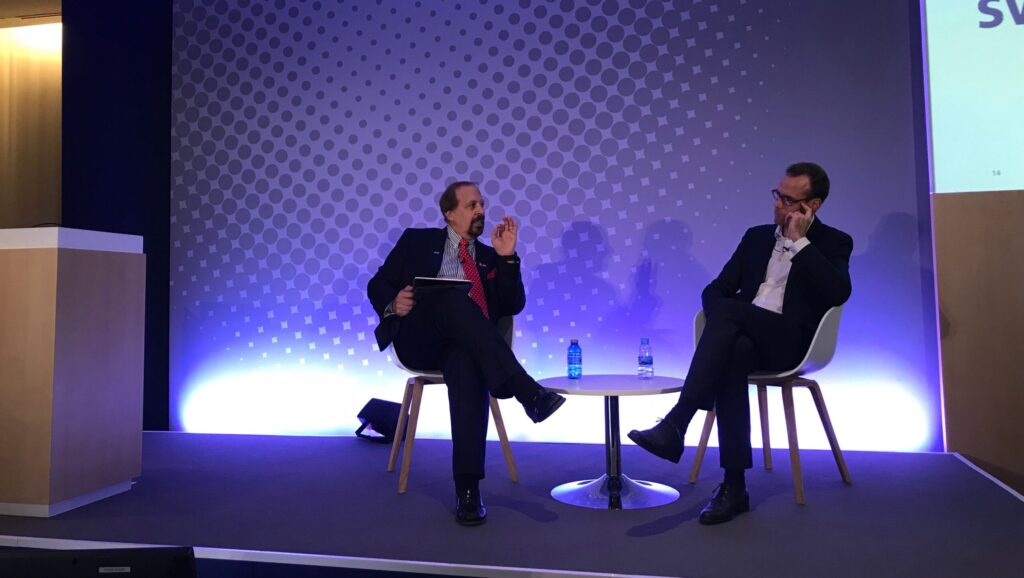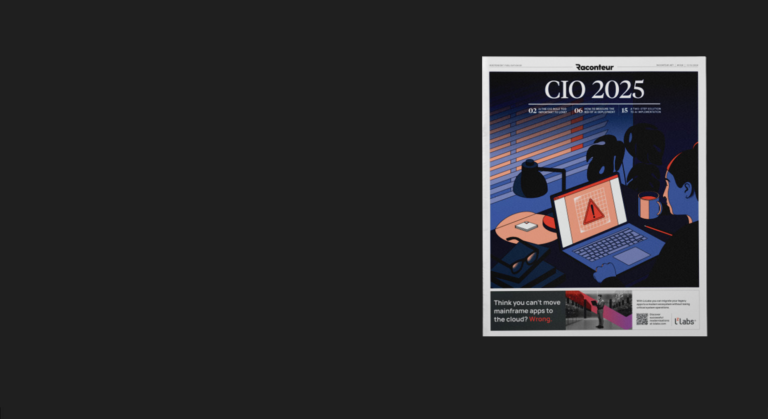
Markus Tschumper, Head of General IT Services at Swisscom, and I met on stage at Garter Symposium/ITXpo 2018 to discuss Swisscom’s migration to the LzLabs Software Defined Mainframe®(SDM). Covering the cultural, technology and skills challenges of such a project, and how LzLabs and Swisscom overcame these together, Markus gives his advice to any business seeking to bring mainframe applications and data onto modern platforms:
DV: What was the main reason you went down the path of mainframe modernization using SDM?
MT: The main reason was cost savings. We also wanted to have more flexibility in the hardware. Those were the main two reasons in the beginning.
DV: What kind of cost saving were you able to achieve with the project?
MT: We produced a business case, which told us we’ll achieve approximately 70% cost saving in total. You can believe me, I’m Swiss, we don’t joke about money!
DV: In our recent survey with Microsoft, 69% of IT leaders said that the cost of mainframe limits their ability to innovate. Almost 70%! Was this a factor for you? Did the courage come from your spreadsheet? Or were there other drivers.
MT: Firstly, the project was a no-brainer, because it presented an attractive level of cost saving. The second driver was our people. I could talk about technical challenges, but really I’m talking about a cultural change. It’s a change project. So, you need to convince the people – particularly those involved with the mainframe – because it’s essential you have them with you on the journey.
Ultimately, a company needs three things in order to convince top management that a project of this kind is worthy of attention:
- First, a reliable partner, like LzLabs.
- A proof of concept, which you perform together.
- A business case that is rock solid.
DV: These applications manage your fixed line billing systems, is that correct?
MT: Yes, and in fact broader than that. The application manages the entire fixed line network. It is not a small application.
DV: So you said this needs to be a change project. Explain that to me, because if you’re eliminating the entire platform, it seems you’re changing a lot. What sort of push back did you get from the mainframe team?
MT: When people have worked for decades with the mainframe and you tell them you’re moving applications to an open environment, they do not always believe it will work. They’re very proud of the mainframe and its availability characteristics, for example, and rightly so. So, you need a technical leader who is on board with the project and believes in its credibility. We have an individual named Christian Hodel – a mainframe specialist who was convinced through his meetings with LzLabs that the SDM would work. That was a key first step in bringing the rest of the team on board.
The second thing required is a follower – someone who listens to the technical specialist, agrees with the approach and is willing to follow him down the same path.
The third thing a company needs for a project of this kind is a management team that has the courage to undertake such a change project. I, as an IT team leader, had to convince the wider team that this was the right approach and that they should follow me on the journey. There will be pressure, but it will be worthwhile for all of us in the long run.
Fourth, you must be aware that not everyone will want to join you on this journey. There will be some resistance and challenges along the way, and it takes courage and patience while you provide support for the wider team in order to ensure the project is a success.
Lastly, you will face challenges due to your mainframe skills base – and therefore knowledge of your application set – which is likely to have diminished in recent years. Yes, the SDM enables you to move applications without reformatting or data changes, but once the applications are moved there are additional interfaces that have been developed over years in a monolithic fashion. It’s unlikely that your in-house teams will have 100% of the knowledge for these interfaces, which might present challenges and is another reason to work with a vendor that has in-depth knowledge of the systems.
DV: There are a number of business processes that are built into the mainframe. Some, employees will remember, some they won’t. So, what is your advice for companies that have business processes implemented in these historical systems? Should they replicate them? Eliminate them? Re-implement them in open technologies? If an organization finds they have 20 of these interfaces, what’s the first thing they should try.
MT: That’s a difficult question. If it’s possible, you should try to eliminate those business processes that are no longer required. In each situation, you need to be open to this.
DV: There’s also the question of approach, right? I found from the thousands of inquiries I took in my Gartner career a common approach was to try and recreate applications in the same way, as opposed to what was really important – the result.
MT: That’s a very good point, because many of your team will expect the applications to be developed in exactly that same way. We’re not trying to recreate the mainframe architecture, we’re simply trying to run mainframe applications in a modern environment. The outcome is therefore absolutely the most important thing, and we want to establish new and more efficient ways of getting there.
DV: Can you explain the project duration and what went into it?
MT: The project duration from an outsider’s perspective might seem long but, as I mentioned before, it is a change project. We were the first customer to say to LzLabs “we will phase out the mainframe”. Therefore, we needed full functionality and features, which came in releases. We also decided to run the SDM on our new private cloud, because this was a more compelling story – running mainframe applications in the cloud. Of course, this required additional development and added time to the project. Thirdly, during this journey we realised we had the opportunity to offer mainframe as a service, via our private cloud, to Swisscom customers. We’re excited about developing this proposition further – something we’ll focus on once the new system goes live.
DV: So, if I understand correctly, getting the SDM to support your application workload, whilst at the same time developing your cloud platform to support the rehosted workload, enabled a revenue and business opportunity for you, which you can take to your customers. Is that right?
MT: That’s correct
DV: You guys are in the final stages of testing, and I guess you’ll be going live in 60 days or so?
MT: That’s right.
DV: If you wanted the audience to remember one thing about your experience, what would it be?
MT: First of all, it works. It really works. You need to have the courage, and you have to face a change project, but it works. Go for it.


